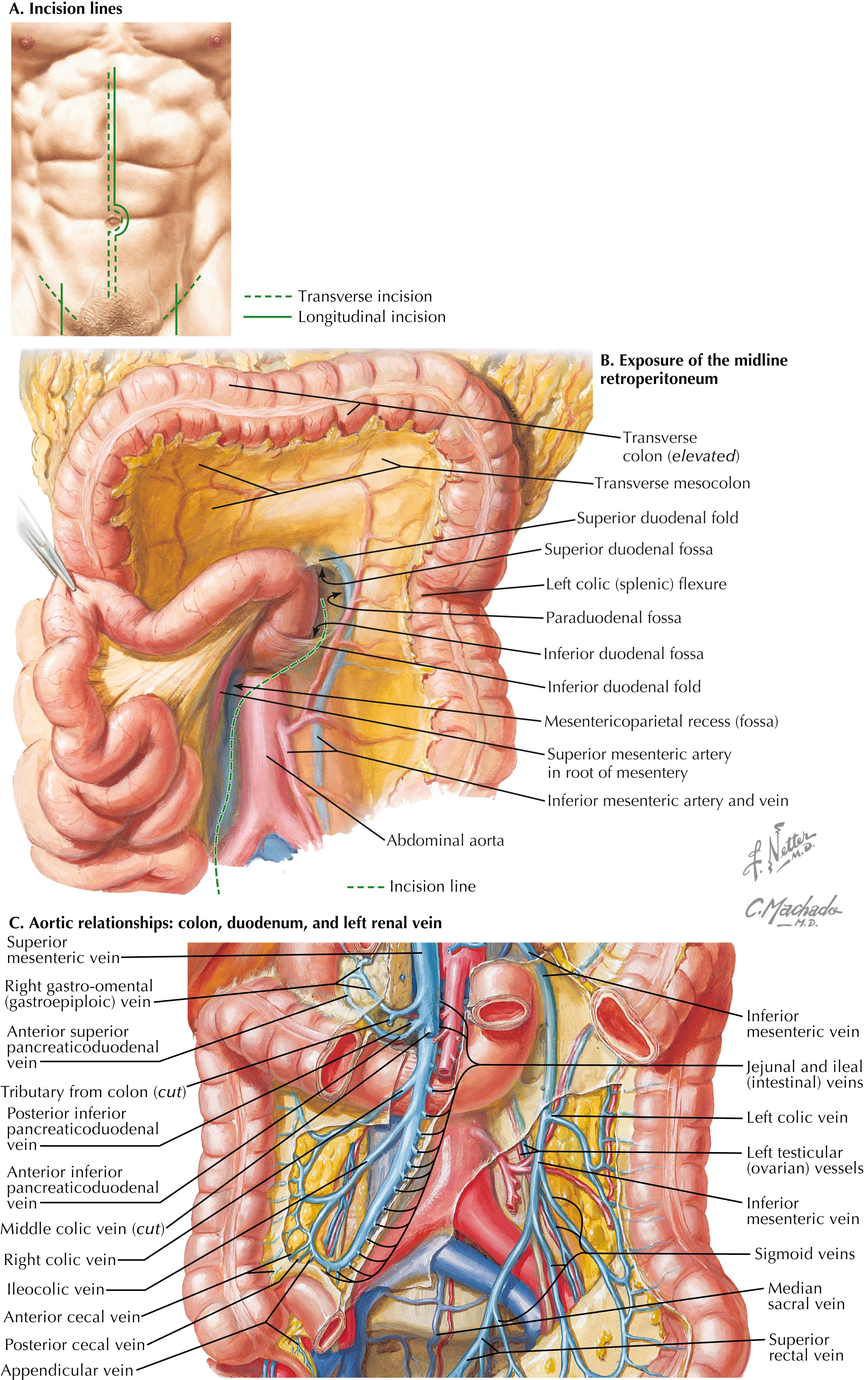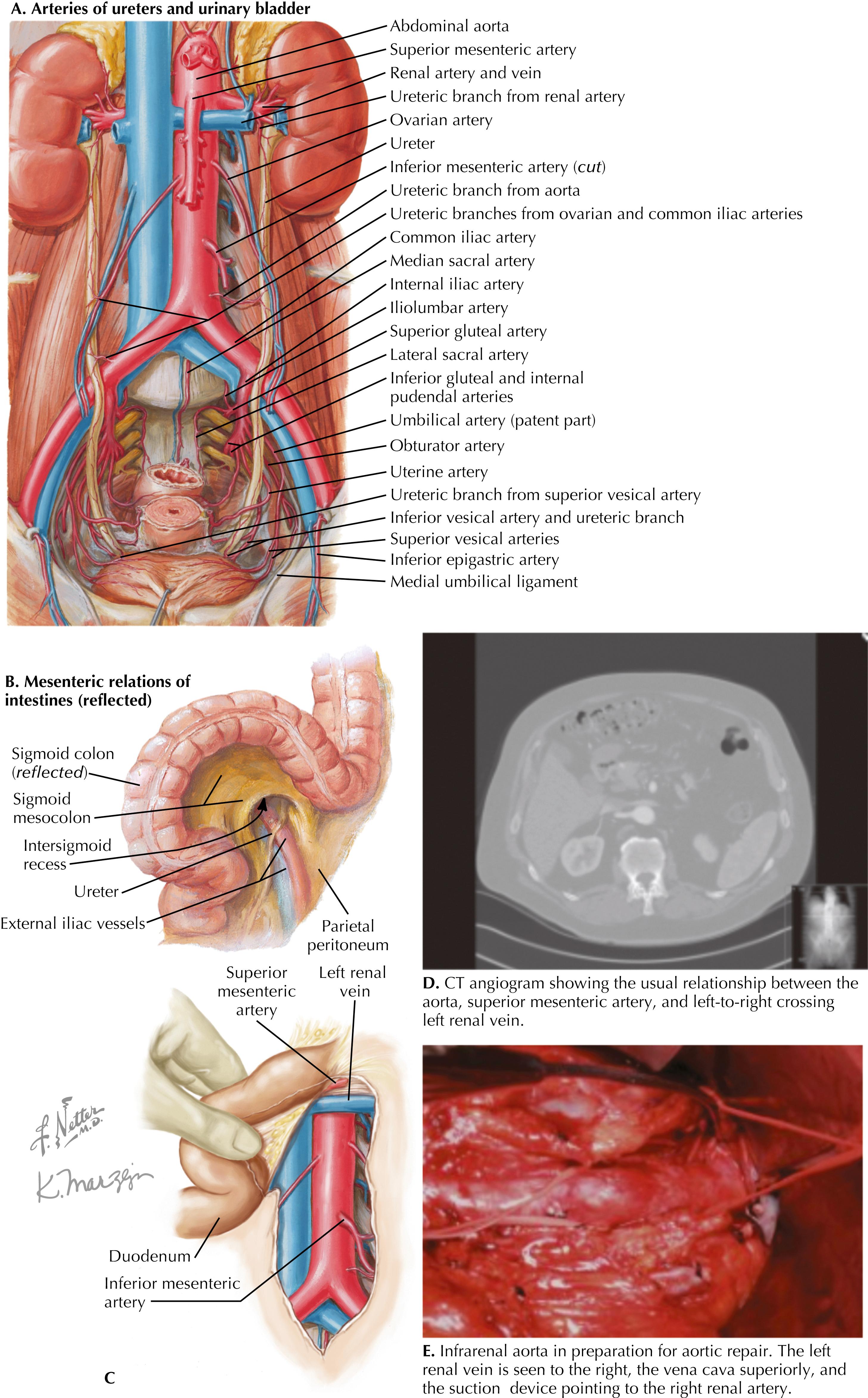Physical Address
304 North Cardinal St.
Dorchester Center, MA 02124
Aneurysms and dissections are the most common disease processes of the aorta. Several factors contribute to their formation and growth. Although most aneurysms are now treated through endovascular techniques, open surgical reconstruction of the aorta is still necessary in certain anatomic and physiologic constraints. Open aortic reconstruction was first described by Dubost et al in 1951 and has undergone continuous improvement and refinement. Infrarenal or juxtarenal aortic aneurysm may be treated with a midline transperitoneal approach, although the retroperitoneal or thoracoabdominal approach may be used if higher-level proximal aortic control is required.
A preoperative computed tomographic angiogram (CTA) is mandatory to investigate the extent of the disease and determine the level of aortic control. The ideal criteria for the proximal aortic cross-clamping are lack of atherosclerotic plaque or mural thrombus without aneurysmal degeneration. There are two widely accepted surgical approaches to expose the aorta: transperitoneal and retroperitoneal. The transperitoneal approach requires the supine position and midline incision. This approach is familiar to many surgeons and offers rapid access to the abdominal cavity and infrarenal aorta. This is a relatively easy way to gain access to the right renal artery and to the right iliac segment when concomitant reconstruction is necessary. As compared with a transperitoneal approach, a retroperitoneal approach, usually via a left 10th intercostal space, requires right lateral decubitus position and oblique left flank incision. The retroperitoneal approach allows superior exposure of the paravisceral or supraceliac abdominal aorta as well as thoracoabdominal aortic aneurysm (TAAA). The retroperitoneal approach is also preferred in patients with previous peritonitis or multiple abdominal surgeries to avoid intra-abdominal adhesions.
The patient is placed on the operating room table in supine position. The abdomen is prepped and draped from the nipples to the knees. A midline abdominal incision is made from the xiphoid process to below the umbilicus for an appropriate distance ( Fig. 43.1A ). An abdominal aortic aneurysm (AAA) not involving the common iliac arteries, and for which a predetermined tube graft reconstruction will be performed, is sufficiently exposed with a shorter abdominal incision to just below the umbilicus.

Then the greater omentum and the transverse colon are retracted cephalad. The small bowel is moved to the right hemi-abdomen, and the sigmoid colon is gently retracted to the left. When possible, small bowel is not eviscerated to prevent unnecessary bowel edema and insensible fluid loss. A self-retraining retractor can facilitate the exposure at this point. The main dissection of the aorta then proceeds ( Fig. 43.1B ). The ligament of Treitz is incised, and the fourth portion of duodenum is mobilized. The peritoneum between the duodenum and the inferior mesenteric vein is divided. This incision starts to the left of the aorta at the ligament of Treitz but should course to the right of the aortic midline to prevent injury to the inferior mesenteric artery (IMA), sigmoid mesentery, and autonomic nervous plexus at the aortic bifurcation. Leaving some peritoneal cuff at the inferior border of the duodenum helps, providing adequate tissue to close the retroperitoneum at the end of the aortic repair ( Fig. 43.1C ).
Palpation of the aortic bifurcation identifies the midline, and the pelvic retroperitoneum is incised. The ureter crosses the iliac vessels anteriorly and at the level of the common iliac bifurcation bilaterally ( Fig. 43.2A ). Depending on the level of anastomosis, vessel loops can be placed around the right external and internal iliac arteries or around the distal common iliac artery, respecting the intimate relationship between the iliac arteries and veins. The most common atherosclerotic pattern demonstrates disease at the distal common iliac artery, so vessel loops around the external and internal iliac arteries are preferred. The vessels are usually soft at this location and will provide the most flexibility in constructing the anastomosis.

The left common iliac bifurcation reveals the same anatomic pattern of ureter anteriorly and a close relationship between the arteries and the fragile veins. Accessing the left common iliac bifurcation is more difficult because of the colonic mesentery. Traction is applied to the mesentery to visualize the desired plane. A layer of tissue that usually contains sympathetic nerves is left over the left common iliac artery, and the left iliac bifurcation is palpated. The ureter is then found, and the entire mass of tissue containing the ureter and sigmoid colon mesentery is gently retracted to dissect the bifurcation and carefully place vessel loops.
Become a Clinical Tree membership for Full access and enjoy Unlimited articles
If you are a member. Log in here